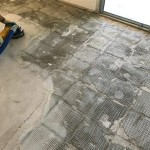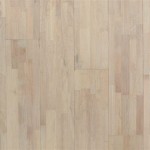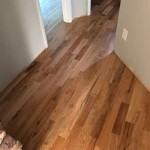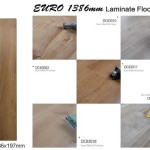Average Cost of Natural Stone Flooring Per Square Foot: A Comprehensive Guide
Natural stone flooring offers a timeless elegance and durability that is difficult to replicate with synthetic materials. Its inherent beauty, unique variations in color and texture, and lasting quality make it a desirable choice for homeowners and commercial property owners alike. However, the cost of natural stone flooring can be a significant consideration. This article provides a comprehensive overview of the average cost per square foot, exploring the factors that influence pricing and offering insights into budgeting for a natural stone flooring project.
Understanding the cost of natural stone flooring involves considering various elements, including the type of stone, its grade or quality, the complexity of the installation, and regional price variations. The initial material cost is just one component of the overall expense; labor and preparation can often significantly increase the final amount. This article aims to demystify the cost components, enabling informed decision-making and realistic project planning.
Factors Influencing the Cost of Natural Stone Flooring
Several factors contribute to the overall cost of natural stone flooring. These factors encompass material characteristics, sourcing, processing, and installation requirements. Understanding these variables is critical for accurately estimating the expenses associated with this type of flooring.
Type of Stone: The type of natural stone selected is a primary driver of cost. Granite, marble, slate, travertine, limestone, and sandstone are among the most common choices, each with distinct properties and price points. For instance, marble is generally considered a premium option due to its luxurious appearance and relative softness, which can make it more susceptible to scratches and etching. Granite, known for its exceptional durability and resistance to staining, often falls into a mid-range price category. Slate, a naturally cleft stone characterized by its layered texture, can vary widely in price depending on the quality and thickness.
Travertine, a form of limestone known for its pitted surface and warm tones, is often more affordable than marble but requires periodic sealing to protect it from moisture and staining. Limestone, a sedimentary rock composed primarily of calcium carbonate, provides a softer, more rustic appearance and is generally more budget-friendly than marble or granite. Sandstone, recognized for its earthy hues and textured surface, can be a cost-effective option, though its porosity requires appropriate sealing. Exotic or rare stones, regardless of type, will command a premium price due to limited availability and high demand.
Grade and Quality: The grade or quality of the stone significantly impacts its cost. Natural stone is classified based on several factors, including the presence of imperfections, the evenness of color, the consistency of texture, and the overall structural integrity. Higher grades of stone, characterized by minimal imperfections and consistent coloration, are more expensive. Lower grades may contain visible blemishes, variations in color, or structural weaknesses that can compromise their long-term performance. These lower grades are typically more affordable but may require more extensive preparation during installation or result in a less uniform appearance.
Size and Thickness: The size and thickness of the stone tiles or slabs also affect the price. Larger tiles generally cost more per piece but may require less labor for installation due to fewer grout lines. Thicker tiles are often more durable and resistant to cracking, making them suitable for high-traffic areas; however, they are typically more expensive than thinner tiles. The optimal size and thickness depends on the subfloor condition, the intended use of the space, and the desired aesthetic.
Finish and Treatment: The finish applied to the stone's surface affects both its appearance and its cost. Polished finishes provide a smooth, glossy surface that enhances the stone's natural color and veining but can be slippery when wet. Honed finishes offer a matte, non-reflective surface that is more slip-resistant but may require more frequent cleaning to maintain its appearance. Tumbled finishes create a rustic, textured surface that adds character and hides minor imperfections. Each finishing process requires specific techniques and materials, contributing to variations in cost.
In addition to the finish, certain treatments, such as sealants and stain repellents, can add to the cost. These treatments protect the stone from moisture, staining, and other damage, extending its lifespan and preserving its appearance. The type and frequency of these treatments depend on the stone's porosity and the environment in which it is installed.
Installation Complexity: The complexity of the installation is another crucial factor influencing the overall cost. Intricate patterns, such as herringbone or mosaic designs, require more time, skill, and materials, resulting in higher labor costs. The condition of the subfloor also plays a significant role. Uneven or damaged subfloors must be properly prepared before installing natural stone, which may involve leveling, reinforcing, or repairing the existing surface. These preparatory steps add to the overall cost but are essential for ensuring a stable and long-lasting flooring installation.
Additionally, the size and shape of the room, the presence of obstacles such as stairs or corners, and the need for custom cutting can all increase the installation time and labor costs. Hiring experienced and qualified installers is crucial for achieving a professional-looking installation and minimizing the risk of costly errors.
Geographic Location: The geographic location of the project also affects the cost of natural stone flooring. Transportation costs, regional labor rates, and local material availability all contribute to price variations. In areas where certain types of stone are readily available, the material costs may be lower compared to regions where the stone must be shipped from distant locations. Similarly, labor rates can vary significantly depending on the local market conditions.
Seasonal variations can also influence the cost. In regions with harsh winters, installation may be more challenging and costly due to weather-related delays and increased demand for indoor projects. Conversely, during slower seasons, contractors may offer discounts to attract business.
Average Cost Ranges for Different Types of Natural Stone
Understanding the average cost ranges for different types of natural stone flooring provides a useful starting point for budgeting purposes. These ranges are approximate and can vary depending on the specific factors discussed earlier. It is important to obtain detailed quotes from multiple suppliers and installers to get an accurate estimate for a particular project.
Granite: Granite typically ranges from $5 to $15 per square foot for the material alone. Installation costs generally add another $3 to $8 per square foot, bringing the total cost to between $8 and $23 per square foot. Granite is a popular choice for its durability, stain resistance, and wide range of colors and patterns.
Marble: Marble is generally more expensive than granite, with material costs ranging from $8 to $25 per square foot. Installation costs are typically higher as well, ranging from $5 to $10 per square foot. The total cost for marble flooring can range from $13 to $35 per square foot. Marble's luxurious appearance and smooth texture make it a desirable option for formal spaces, but it requires careful maintenance to prevent scratching and etching.
Slate: Slate offers a more rustic and textured appearance, with material costs ranging from $4 to $12 per square foot. Installation costs can be variable, ranging from $3 to $7 per square foot, depending on the complexity of the installation and the thickness of the slate. The total cost for slate flooring typically falls between $7 and $19 per square foot. Slate is a durable and slip-resistant option that is well-suited for both indoor and outdoor applications.
Travertine: Travertine is a form of limestone known for its pitted surface and warm tones. Material costs range from $3 to $10 per square foot, with installation costs adding another $3 to $7 per square foot. The total cost for travertine flooring typically ranges from $6 to $17 per square foot. Travertine is a relatively affordable option that provides a natural and inviting look, but it requires sealing to protect it from moisture and staining.
Limestone: Limestone is a sedimentary rock that offers a softer, more rustic appearance than marble or granite. Material costs range from $3 to $8 per square foot, with installation costs typically between $3 and $6 per square foot. The total cost for limestone flooring generally falls between $6 and $14 per square foot. Limestone is a budget-friendly option that is suitable for a variety of interior styles.
Sandstone: Sandstone is characterized by its earthy hues and textured surface. Material costs range from $3 to $9 per square foot, with installation costs adding another $3 to $6 per square foot. The total cost for sandstone flooring typically ranges from $6 to $15 per square foot. Sandstone is a cost-effective option that provides a natural and warm look, but its porosity requires appropriate sealing.
Hidden Costs and Considerations
When budgeting for a natural stone flooring project, it's essential to account for potential hidden costs and unexpected expenses. These costs can arise from various sources, including subfloor preparation, waste disposal, and additional materials required for the installation.
Subfloor Preparation: As previously mentioned, the condition of the subfloor can significantly impact the overall cost. If the existing subfloor is uneven, damaged, or unstable, it must be properly prepared before installing the natural stone. This may involve leveling, repairing cracks, or reinforcing the subfloor with additional layers of plywood or cement board. These preparatory steps can add several dollars per square foot to the total cost.
Waste Disposal: Natural stone flooring projects often generate a significant amount of waste, including broken tiles, excess mortar, and packaging materials. Proper disposal of this waste can incur additional costs, especially if hazardous materials are involved. Some municipalities require specific disposal methods for certain types of waste, which may require hiring a professional waste removal service.
Additional Materials: In addition to the stone tiles or slabs, several other materials are required for a successful installation. These include mortar, grout, sealants, and cleaning products. The type and quantity of these materials depend on the type of stone, the installation method, and the desired finish. It is important to factor in the cost of these materials when budgeting for the project.
Sealing and Maintenance: Natural stone flooring requires regular sealing and maintenance to protect it from moisture, staining, and wear. The frequency and type of sealing depend on the stone's porosity and the environment in which it is installed. While the initial cost of sealing materials and equipment may seem minimal, the long-term maintenance costs can add up over time.
Contingency Fund: It is always prudent to include a contingency fund in the budget to cover unexpected expenses or unforeseen problems. A contingency of 10% to 15% of the total project cost is generally recommended. This fund can help cover unexpected repairs, material shortages, or changes to the project scope.

How Much Does Nature Stone Cost 2025

What Is Natural Stone Flooring Types Pros Cons Cleaning

Faq Nature Stone Flooring For Garages Basement And Commercial Floors

What Is Natural Stone Flooring Types Pros Cons Cleaning

Daltile Natural Stone Collection Mongolian Spring 12 In X 24 Slate Flagstone Floor And Wall Tile 13 5 Sq Ft Case S781pattnflag1p The Home

What Is Natural Stone Flooring Types Pros Cons Cleaning

Natural Stone Flooring Cost A Homeowner S Guide 2025 Data Angi

Natural Stone Flooring Cost A Homeowner S Guide 2025 Data Angi

What Is Natural Stone Flooring Types Pros Cons Cleaning

Natural Stone Flooring Cost A Homeowner S Guide 2025 Data Angi
See Also







